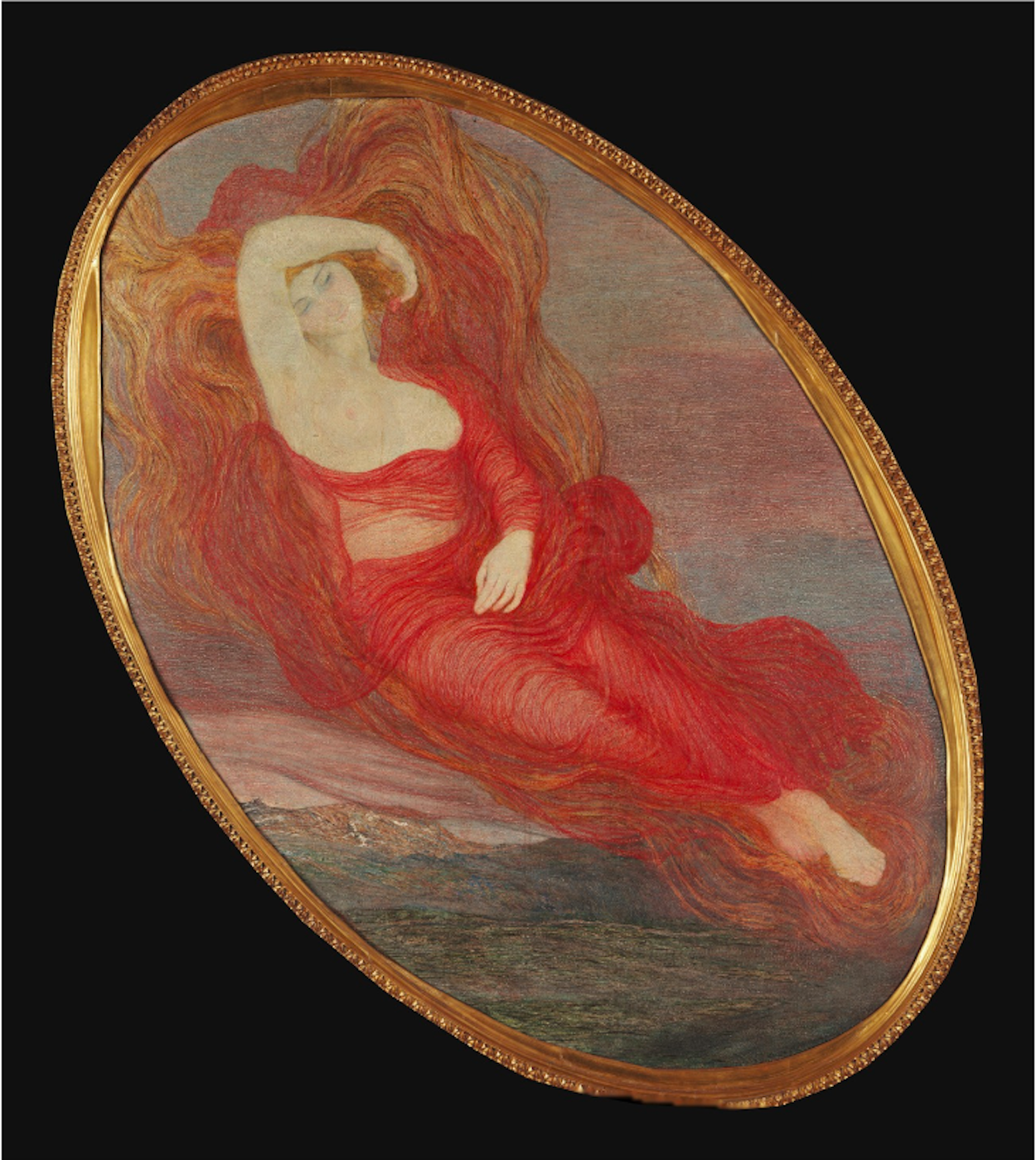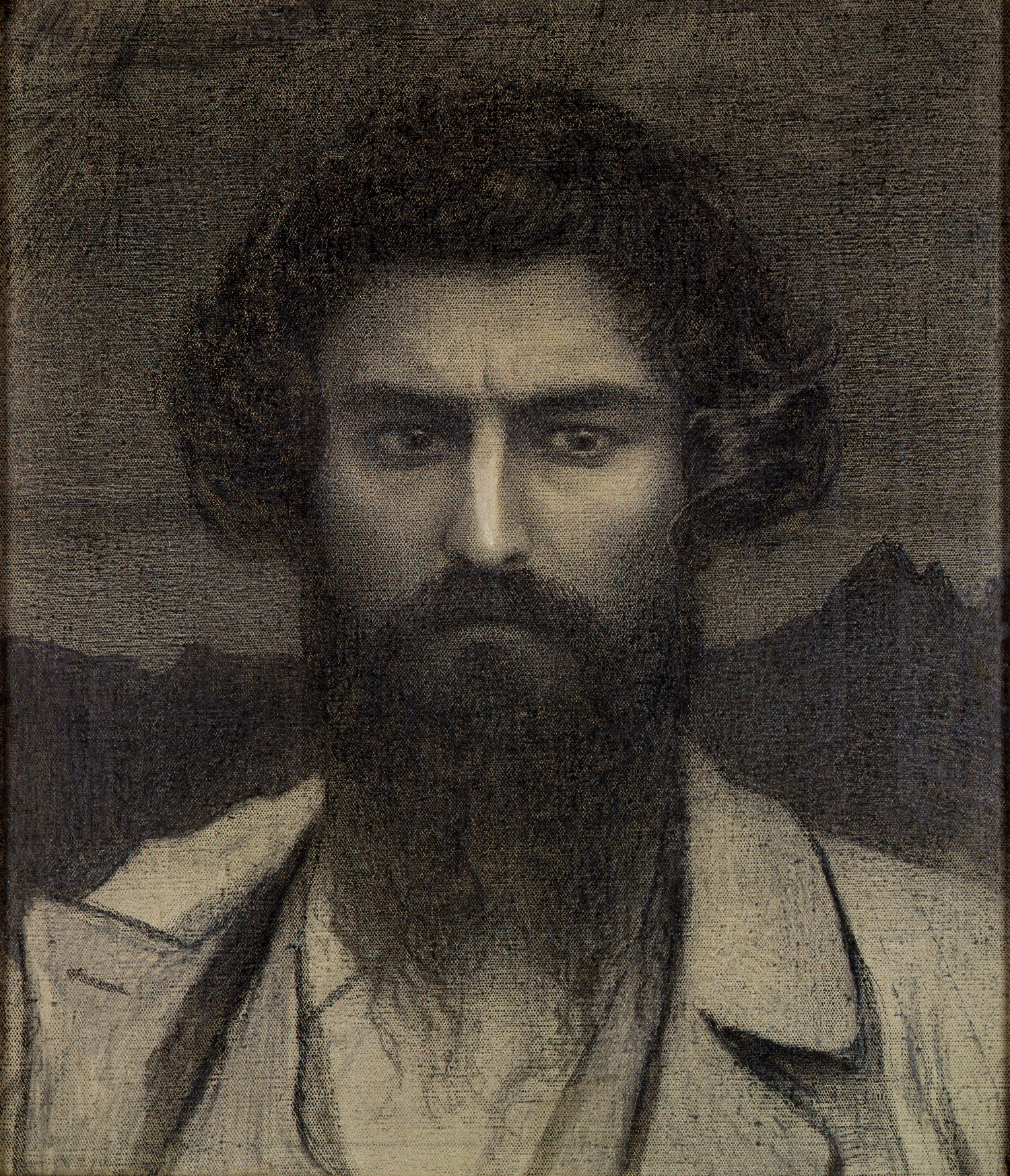Giovanni Segantini was an Italian painter known for his large pastoral landscapes of the Alps. He was one of the most famous artists in Europe in the late 19th century. In later life, he combined a Divisionist painting style with Symbolist images of nature. He was active in Switzerland during the last period of his life.
In Pagan Goddess, we see the depiction of the female figure that bears a resemblance to Venetian Renaissance prototypes, including the Venere di Dresda (Venus of Dresden) by Giorgione and Titian (Tiziano) and the Venere di Urbino (Venus of Urbino) by Titian (Tiziano).
The current oval-shaped version of the painting is the result of subsequent reworkings of the first draft that was made in 1894. Presented at his personal exhibition at Sforza Castle in that same year, Segantini later reworked the painting for the first time after some criticism. The female figure, who was initially nude, was deemed inappropriate, so the artist crafted the surrounding red drapery that covers her, blending with her thick blonde hair. An extended portion of the landscape was covered with burnished gold polish, framing the image in its current oval shape. Finally, in the 1930s, the elaborate golden frame was added above the layer of gold polish.
Here's a Giovanni Segantini's snowy story with a sad end.


 Giovanni Segantini
Giovanni Segantini